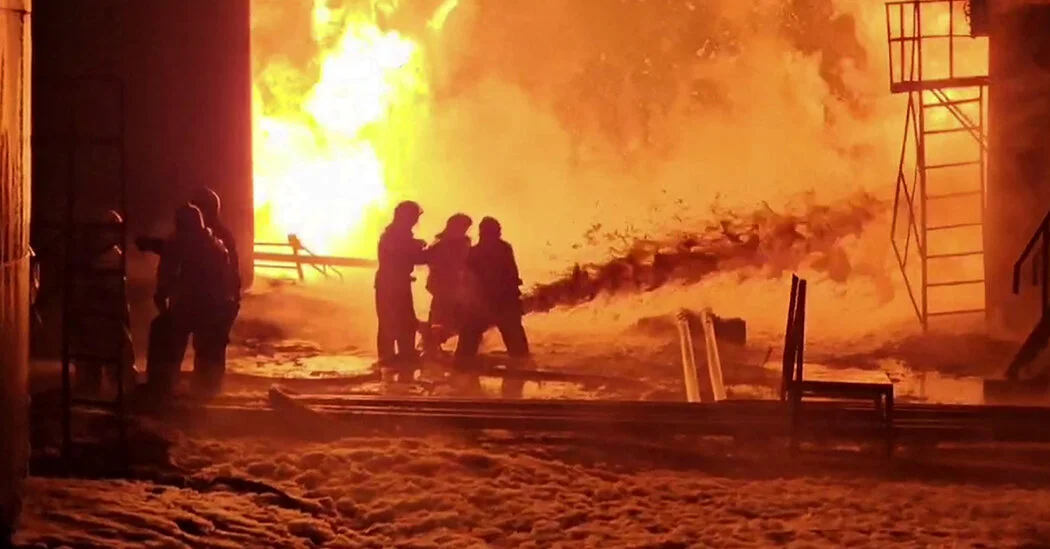Mr. Ernst and Mr. Krutikhin noted that, unlike in other oil infrastructure such as pipelines, a lot of complex machinery and sophisticated engineering goes into refineries, and they can take several months to fix. Some analysts say the repairs could take longer than usual because sanctions prohibit Western sales of certain components to Russia.



This is the best summary I could come up with:
With its army short of ammunition and troops to break the deadlock on the battlefield, Ukraine has increasingly taken the fight behind Russian lines, attacking warships, railways and airfields in an attempt to diminish Moscow’s military operations.
On Tuesday and Wednesday, Ukrainian drones hit four Russian refineries, officials on both sides said, adding to a series of recent attacks that have set fire to depots, fuel tanks and other oil infrastructure across Russia.
Mikhail Krutikhin, an independent Russian energy analyst living in exile in Oslo, said the strikes had prompted Moscow to introduce a six-month ban on gasoline exports, starting March 1, to try to ensure that domestic demand is met while repairs are made to damaged refineries.
Oil plants are sprawling and hard to protect, and there are so many of them across Russia that Moscow cannot realistically provide them all with air defenses, according to Mr. Krutikhin and Damien Ernst, an energy expert and professor at the University of Liège in Belgium.
After this week’s attacks, the Russian authorities said operations had been temporarily halted at two of the refineries that were hit near Nizhny Novgorod, east of Moscow, and in the southern Rostov region.
After Moscow invaded Ukraine in February 2022, Western nations introduced sweeping sanctions targeting Russian sales of hydrocarbons — including oil, gas and coal.
The original article contains 898 words, the summary contains 220 words. Saved 76%. I’m a bot and I’m open source!